Create Sorry content for ALB and Fargate(ECS) pattern
If your system is configured with ALB and Fargate (ECS), Fargate may be temporarily stopped for system maintenance or other reasons.
If a user accesses the system during maintenance, you need to inform the user.
In this case, we will prepare Sorry content in a Lambda function and associate this with ALB.
Then, during maintenance, we will configure it so that traffic from users will be routed here.
Environment

We will associate two contents with ALB.
The first is Fargate.
It pulls images from the ECR repository and creates a container.
The second is a Lambda function.
It acts as Sorry content.
CloudFormation template files
The above configuration is built with CloudFormation.
The CloudFormation templates are located at the following URL
https://github.com/awstut-an-r/awstut-fa/tree/main/086
Explanation of key points of the template files
This page covers how to deploy Sorry content in the ALB/Fargate configuration.
For information on how to attach Fargate (ECS) in a private subnet to ALB, please refer to the following page

For information on how to forward traffic to multiple target groups with path-based routing in ALB, please check the following page
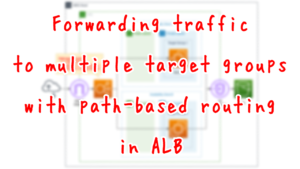
For information on how to attach Lambda or other content to ALB, please refer to the following page
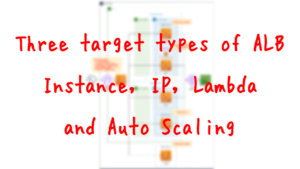
Lambda Functions
Resources:
Function:
Type: AWS::Lambda::Function
Properties:
Architectures:
- !Ref Architecture
Code:
ZipFile: |
import json
def lambda_handler(event, context):
return {
'statusCode': 503,
'isBase64Encoded': False,
'headers': {
'Content-Type': 'text/html; charset=utf-8'
},
'body': 'Sorry Contents from Lambda Function.'
}
FunctionName: !Sub "${Prefix}-function"
Handler: !Ref Handler
Runtime: !Ref Runtime
Role: !GetAtt FunctionRole.Arn
Code language: YAML (yaml)No special configuration is required.
It is a simple function that returns “Sorry Contents from Lambda Function.” with status code 503.
The key point is the resource-based policy of the Lambda function.
Resources:
Permission:
Type: AWS::Lambda::Permission
Properties:
FunctionName: !Ref Function
Action: lambda:InvokeFunction
Principal: elasticloadbalancing.amazonaws.com
Code language: YAML (yaml)This is the content that permits the ELB to invoke this function.
This setting is for the ALB to return Sorry content as described below.
ALB
Target Groups
Resources:
ALBTargetGroupFargate:
Type: AWS::ElasticLoadBalancingV2::TargetGroup
Properties:
...
ALBTargetGroupLambda:
Type: AWS::ElasticLoadBalancingV2::TargetGroup
Properties:
HealthCheckEnabled: false
Name: !Sub "${Prefix}-ALBTargetGroupLambda"
Targets:
- Id: !Ref FunctionArn
TargetType: lambda
Code language: YAML (yaml)Define target groups as resources for the ALB relationship.
Two target groups are required.
The first is the group for Fargate.
This explanation is omitted.
The second group is for Lambda functions.
Specify the ARN of the aforementioned Lambda function in the Targets property and “lambda” in the TargetType property.
Now you can set the Lambda function as the routing destination for incoming traffic to the ALB.
Listener Rules
Resources:
ALBListener:
Type: AWS::ElasticLoadBalancingV2::Listener
Properties:
DefaultActions:
- TargetGroupArn: !Ref ALBTargetGroupFargate
Type: forward
LoadBalancerArn: !Ref ALB
Port: !Ref HTTPPort
Protocol: HTTP
ALBListenerRule1:
Type: AWS::ElasticLoadBalancingV2::ListenerRule
Properties:
Actions:
- TargetGroupArn: !Ref ALBTargetGroupFargate
Type: forward
Conditions:
- Field: path-pattern
PathPatternConfig:
Values:
- /*
ListenerArn: !Ref ALBListener
Priority: 1
ALBListenerRule2:
Type: AWS::ElasticLoadBalancingV2::ListenerRule
Properties:
Actions:
- TargetGroupArn: !Ref ALBTargetGroupLambda
Type: forward
Conditions:
- Field: path-pattern
PathPatternConfig:
Values:
- /*
ListenerArn: !Ref ALBListener
Priority: 2
Code language: YAML (yaml)Create two rules.
The first is for Fargate.
Set it to match all paths and specify “1” for the Priority property.
This will make this rule the preferred one.
The second is for Lambda functions.
Here, too, set the rule to match all paths and specify “2” for the Priority property.
Due to the priority, the first rule for Fargate is applied during normal operation.
During maintenance, manually adjust these priorities to route traffic to the Lambda function, which is Sorry content.
(Reference) Application Container
index.html
<html>
<head>
</head>
<body>
<h1>fa-086 index.html</h1>
</body>
</html>
Code language: HTML, XML (xml)A simple HTML file.
Dockerfile
FROM nginx:latest
COPY index.html /usr/share/nginx/html
EXPOSE 80
Code language: Dockerfile (dockerfile)Create an image based on nginx, with the root HTML file replaced with the one mentioned above.
Architecting
Use CloudFormation to build this environment and check the actual behavior.
Create CloudFormation stacks and check resources in stacks
First, create a CloudFormation stack for the ECR repository and push a Docker image to the created ECR.
For more information on this procedure, please refer to the following page

After the image is ready, create the rest of the stacks.
For information on how to create nested stacks and check each stack, please refer to the following page

After checking the resources of each stack, information on the main resources created this time is as follows
- ALB DNS name: fa-086-alb-2131954533.ap-northeast-1.elb.amazonaws.com
- ECR repository: fa-086
- ECS Cluster: fa-086-cluster
- ECS service: fa-086-service
- Lambda function: fa-086-lambda
Check each resource from the AWS Management Console.
Check the ALB.
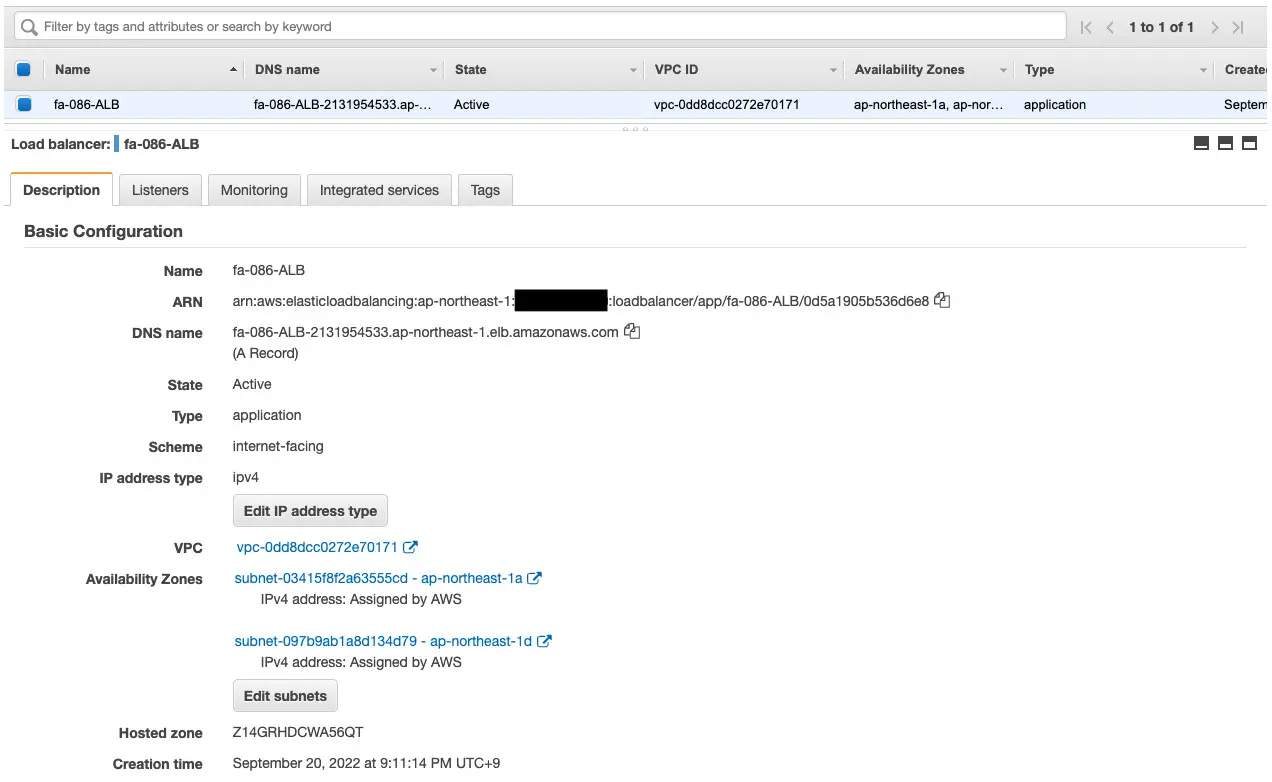
You can see that ALB has been successfully created.
Also check the ALB target groups.
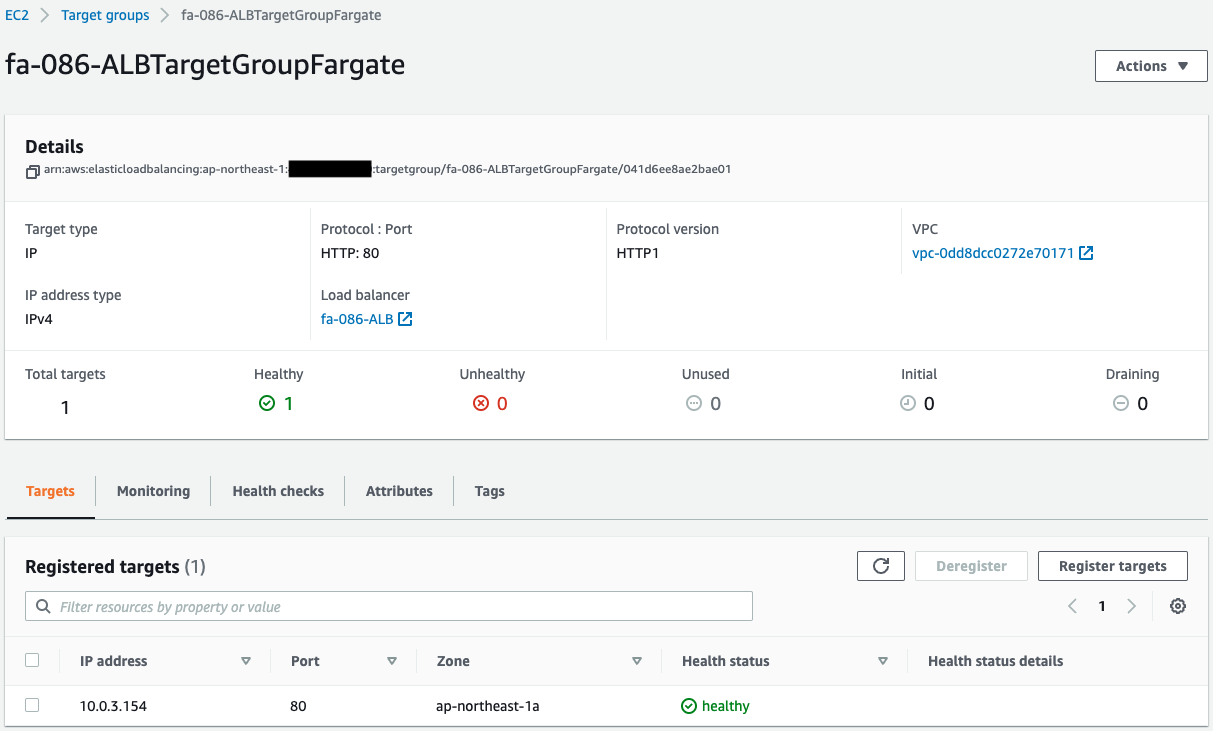

You can see that two target groups have been created.
These groups are for Fargate and Lambda functions respectively.
Check the listener rules.
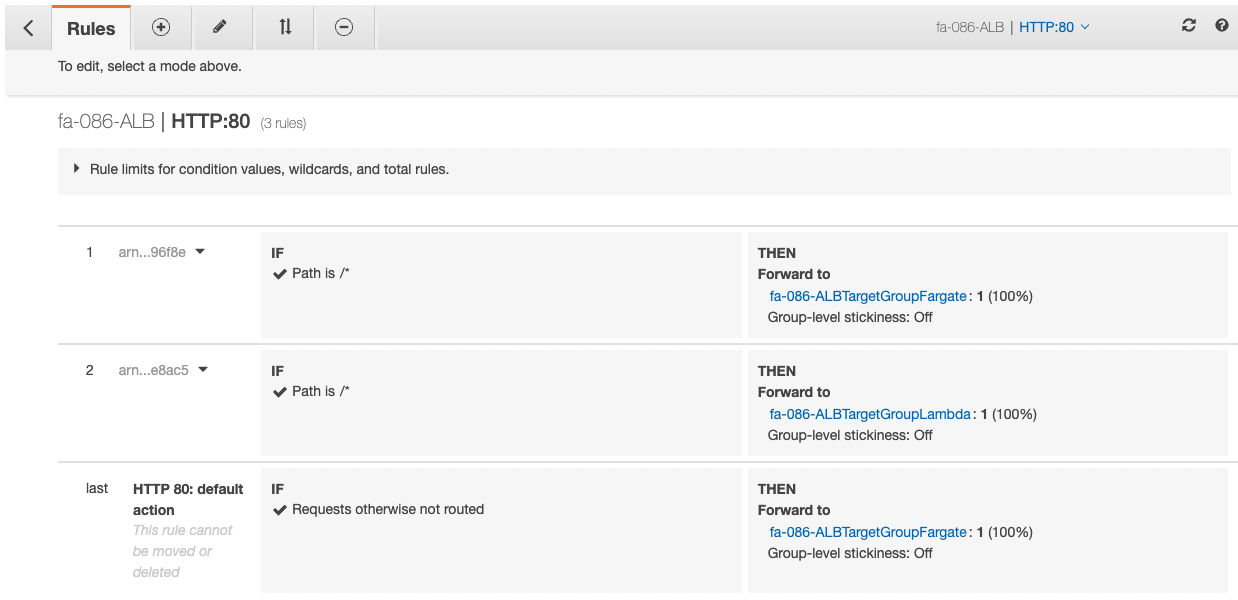
You can see that the rule for Fargate has the highest priority, followed by the rule for Lambda functions.
Check Action
Normal
Now that everything is ready, access the ALB.
Access the domain name of the ALB that you have just confirmed.

The container on Fargate can be accessed via ALB.
This means that the rule for the highest priority Fargate has been applied.
Maintenance
Next, we will display Sorry content for maintenance.
First, from the AWS Management Console, we manually change the ALB listener rules.
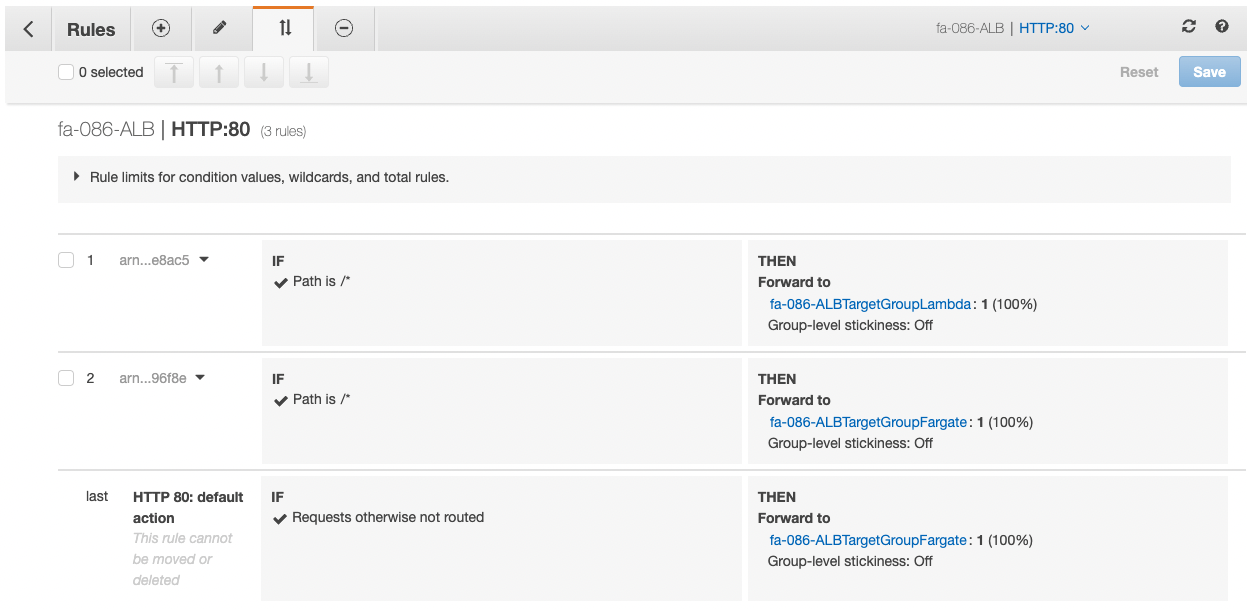
We have changed the priority order.
We set the rule for the Lambda function to the highest priority.
Access the domain name of the ALB again.

The string for the Sorry content Lambda function is returned.
By changing the listener rule in this way, the Sorry content can be output during maintenance.
Summary
We have confirmed how to deploy Sorry content using Lambda functions in ALB and Fargate configurations.
By changing the priority of the listener rule, we confirmed that the Sorry contents can be displayed during maintenance.